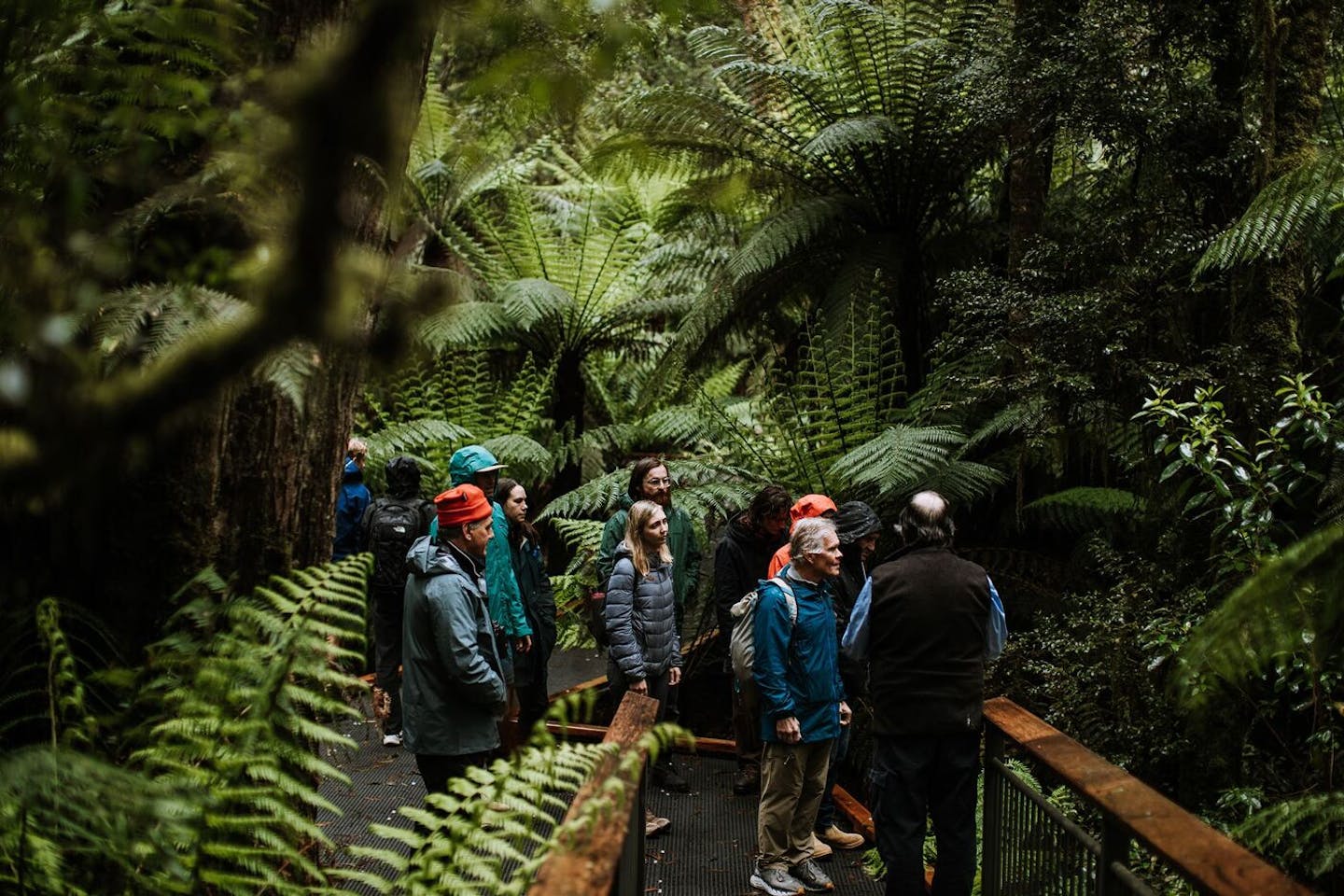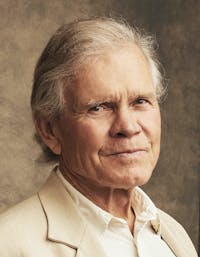The Future Great Forest National Park of Australia
Video courtesy of Cam Suttie/Know Studio.
Of One Earth’s three pillars of collective action to keep the planet to 1.5°C – a just transition to 100% renewable energy, a shift to net-zero food and fiber systems, protection and restoration of half the world’s land and oceans – protecting nature makes the biggest contribution to solving both the climate and extinction crises.
The number one strategy for protecting nature is to increase protected areas around the world. Within that strategy, the number one tactic is to increase national parks because they offer the highest level of protection. Last month Nuna Teal, One Earth’s Program Director, and Rick Ridgeway, One Earth’s Chairman of the Board, were invited by Patagonia Australia & Aotearoa (New Zealand) to join other local activists in visiting a proposed new national park in Australia’s Central Highlands 60 kilometers (37 miles) northeast of Melbourne.
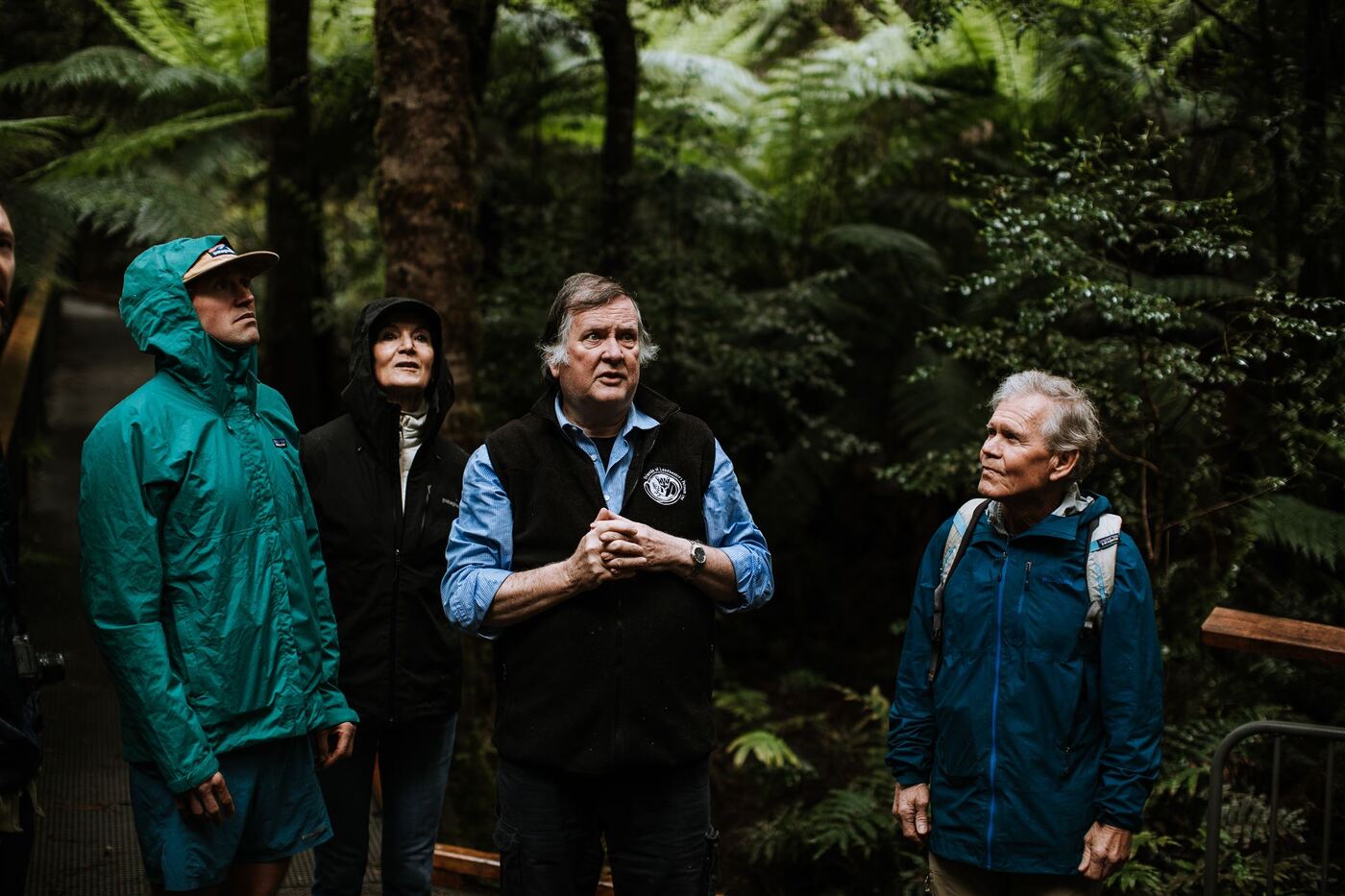
Speaker: Steve Meacher, president, Friends of the Leadbeater’s Possum. Image credit: Courtesy of Jarrah Lynch
When Nuna, Rick, and the group arrived in the forest, Wurundjerri Elder Perry Wandin gave the Welcome to Country. Guided by Dr. David Lindenmayer, one of the world’s leading forest ecology and conservatio biology experts, and Sarah Rees, an environmental activist who initiated the campaign to create the new park, they hiked through ancient forests of Mountain Ash and Antarctic Beech. To protect the forests and their wildlife, the group is advancing a plan to unify three existing but fragmented national parks with surrounding Crown lands that are currently being logged or are under threat of logging, creating the new Great Forest National Park that would total a whopping 525,000 hectares (1,300,000 acres).
From a climate mitigation perspective, the conservation of mature trees should be a top priority due to their high resistance to drought, exceptional carbon storage capacity, and substantially greater seed production than young trees. From their high canopies into the earth below, they provide many habitats, foraging niches, and critical nesting and denning sites.
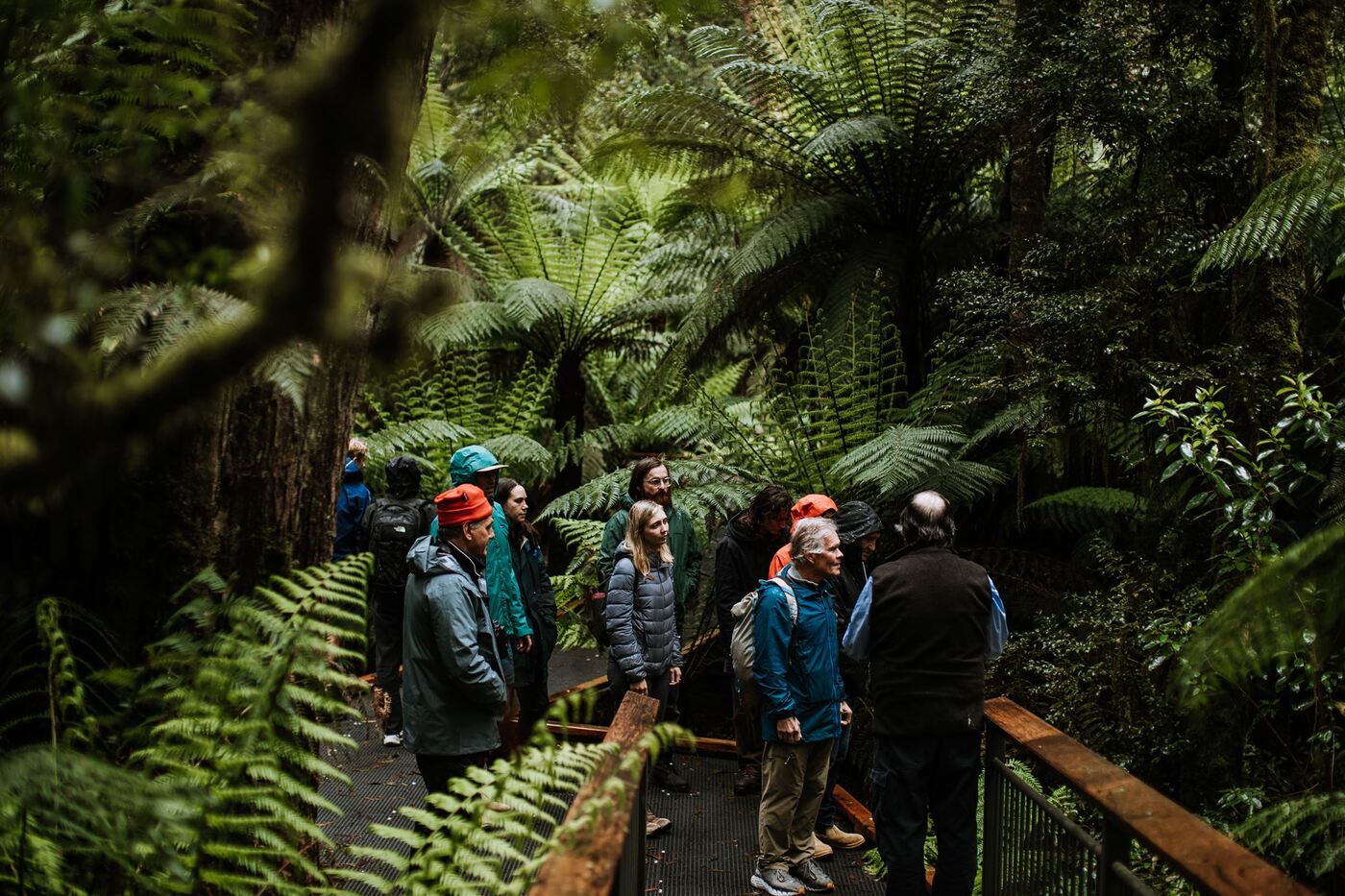
Image credit: Courtesy of Jarrah Lynch
In the Central Highlands, the mature tree of greatest significance is the Mountain Ash, the tallest flowering plant in the world. Despite having the common name “ash,” the tree is one of over 700 species of Eucalyptus, most of which are native to Australia (but not the US). The height of the tallest living Mountain Ash is 100.5 meters or 330 feet. Still, an even larger tree that had fallen by the time it was measured was 132.6 meters, or 435 feet, making it higher than what is currently the tallest tree in the world, a Coastal Redwood in California. Mountain Ash forests are also the most carbon-dense forests in the world, worth an estimated $50 million per year in carbon abatement.
As in mature forests worldwide, many species of flora and fauna in the Central Highlands rely on old growth for their survival, including Leadbeater’s possum, an endearing but critically endangered marsupial whose small range is centered in the proposed new park. Yet much of this forest, including the giant Mountain Ash, is now being clearcut by the Australian state of Victoria. The logging company is state-owned, and although the current Victorian government has announced its intent to phase out logging and end it by 2030, scientists and other activists argue that at current rates of clearing, the most critical sections of mature forest will be annihilated by then. For Nuna and Rick, the scenes of clearcut devastation immediately adjoining mature forest and even lush Gondwanan rainforest - with its huge ferns, clear-running streams, and the world’s tallest moss - confirmed the necessity for urgent action.
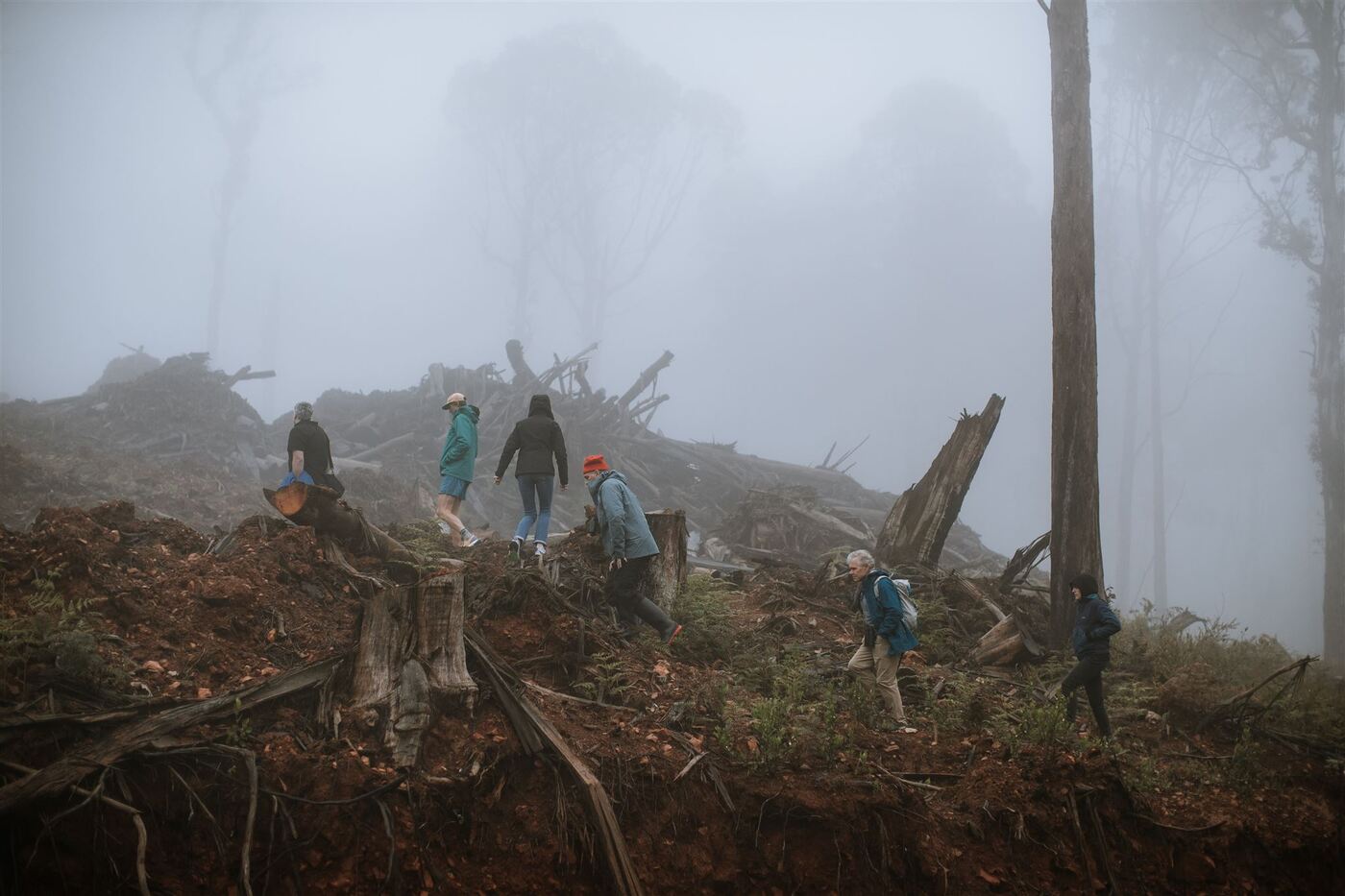
Image credit: Courtesy of Jarrah Lynch
In addition to the scientists and activists who are opposing the logging, the traditional Aboriginal custodians of the lands encompassed in the proposed national park –the Gunaikurnai, Taungurung, and Wurundjeri people– came together in 2019 to call upon the government to bring an end to the state’s logging and destruction of the forest and landscapes of the Central Highlands.
Scientists and activists are widening support for the park by educating the public about the value of a mature forest and encouraging people to enter the magical world of its beauty and biodiversity through popular events such as races that attract elite runners. In addition to the forest’s critical role in protecting the watershed that provides much of Melbourne’s water, the proposed park is estimated to attract 400,000 visitors a year and create 750 new jobs. The combined economic value of the new park and the protected, intact forest would be over 71 million Australian dollars, as opposed to about 12 million in revenue from logging. The value of the forest for carbon storage is quantifiable. Harder to measure but just as important to us are the solace and rejuvenation that only intact and healthy nature can provide.

Image credit: Courtesy of Jarrah Lynch
The activists are organized into several NGOs, including Friends of the Earth Melbourne, Wildlife of the Central Highlands, Environmental Justice Australia, and Friends of the Leadbeater’s Possum. Rick Ridgeway, the former VP of Environmental Initiatives for Patagonia, Inc., is proud that the company is supporting these nonprofits and increasing awareness for the new park with a compelling campaign called Thank You for Not Chopping Here.
“The proposed park belongs to everyone, and they should go and visit it,” activist Sarah Rees said. “Marvel at the heights of the mighty Mountain Ash, listen for the calls of the Superb Lyre-birds, and watch for the flight of Gliders at twilight.”
“One Earth’s Project Marketplace will soon be hosting some of these groups, as well as others engaged in breeding and rewilding species that have already vanished from the forests these partnerships seek to protect,” Nuna added. “We look forward to seeing the Great Forest National Park join the growing list of protected areas featured on the maps of One Earth’s Global Safety Net.”
For more information, head to the Great Forest National Park website.
